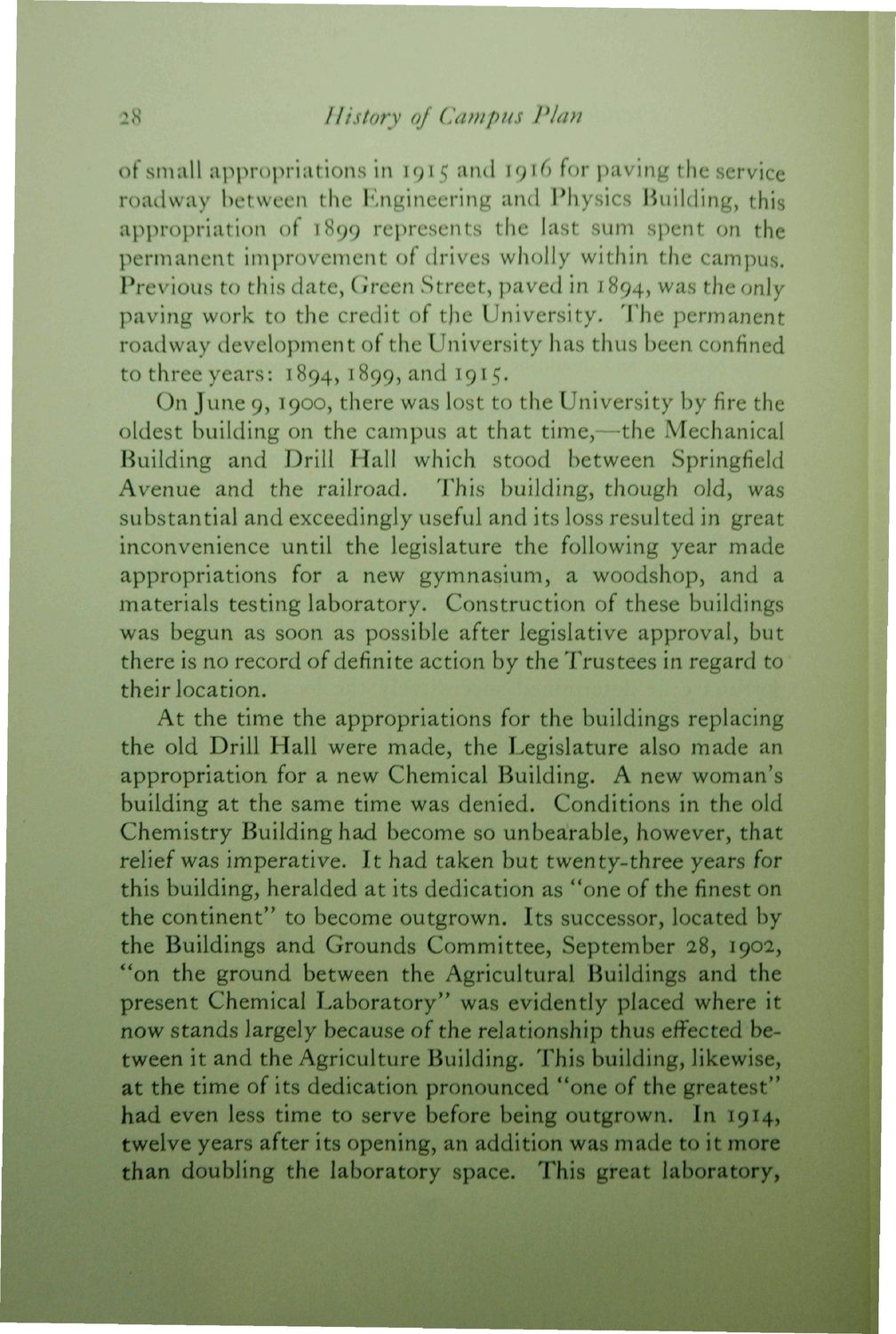| |
| |
Caption: Book - 30 Year Master Plan (Tilton & O'Donnell)
This is a reduced-resolution page image for fast online browsing.

EXTRACTED TEXT FROM PAGE:
>tt History of Campus Plan of small appropriations in 1915 and 1916 for paving the service roadway between the Engineering and Physics Building, this appropriation of 1899 represents the last sum spent on the permanent improvement of drives wholly within the campus. Previous to this date, Green Street, paved in 1894, was the only paving work to the credit of the University. The permanent roadway development of the University has thus been confined to three years: 1894,1899, and 1915On June 9,1900, there was lost to the University by fire the oldest building on the campus at that time,—the Mechanical Building and Drill Hall which stood between Springfield Avenue and the railroad. This building, though old, was substantial and exceedingly useful and its loss resulted in great inconvenience until the legislature the following year made appropriations for a new gymnasium, a woodshop, and a materials testing laboratory. Construction of these buildings was begun as soon as possible after legislative approval, but there is no record of definite action by the Trustees in regard to their location. At the time the appropriations for the buildings replacing the old Drill Hall were made, the Legislature also made an appropriation for a new Chemical Building. A new woman's building at the same time was denied. Conditions in the old Chemistry Building had become so unbearable, however, that relief was imperative. It had taken but twenty-three years for this building, heralded at its dedication as "one of the finest on the continent" to become outgrown. Its successor, located by the Buildings and Grounds Committee, September 28, 1902, "on the ground between the Agricultural Buildings and the present Chemical Laboratory" was evidently placed where it now stands largely because of the relationship thus effected between it and the Agriculture Building. This building, likewise, at the time of its dedication pronounced "one of the greatest" had even less time to serve before being outgrown. In 1914, twelve years after its opening, an addition was made to it more than doubling the laboratory space. This great laboratory.
| |